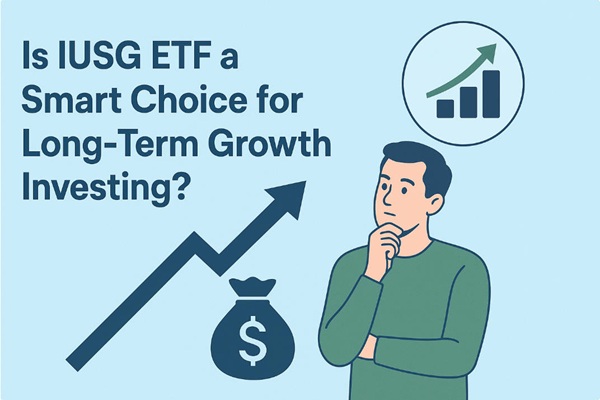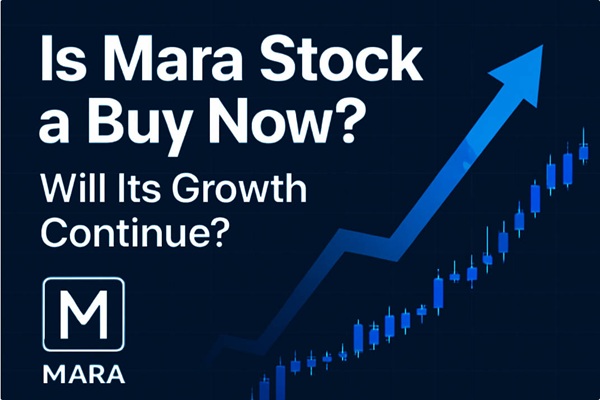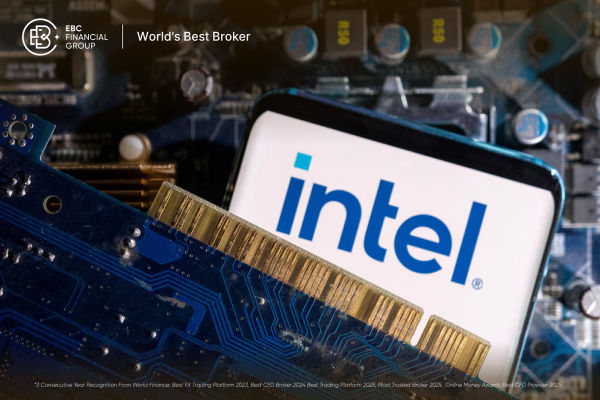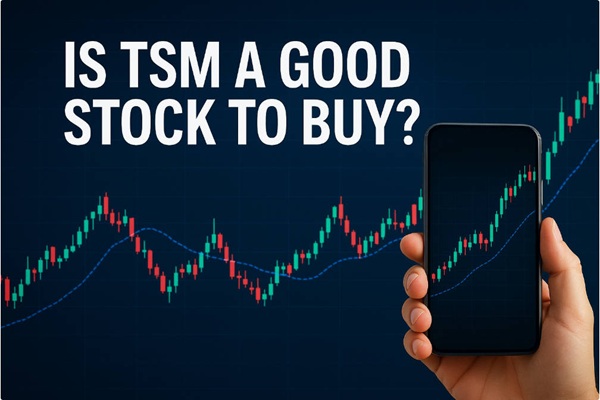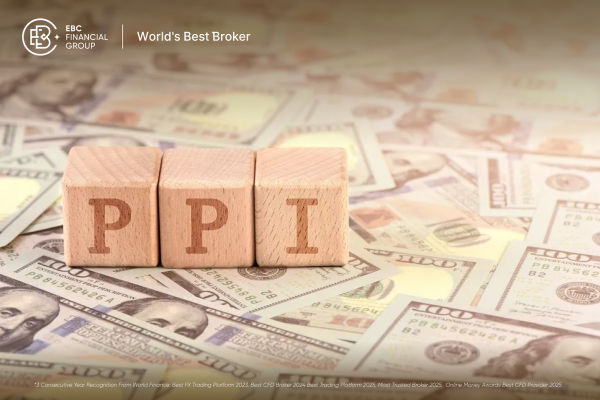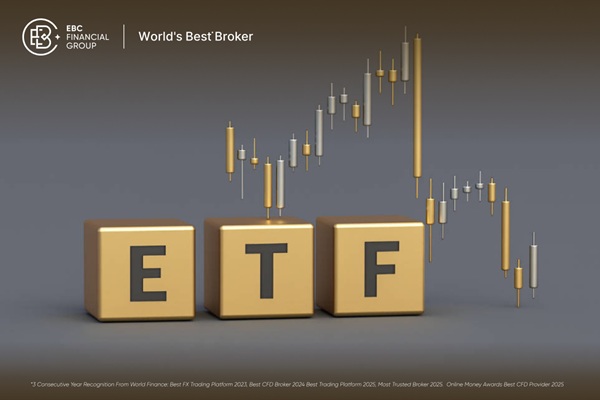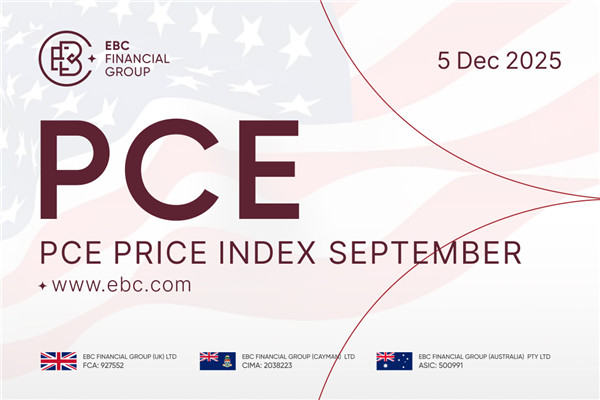The iShares Core S&P U.S. Growth ETF, ticker IUSG, is a low-cost, broad exposure ETF designed to capture the performance of US large and mid capitalisation growth stocks.
It's cost efficient, heavily weighted to a handful of mega cap technology names and suitable as a growth sleeve for long-term investors prepared to accept elevated volatility.
This article will explain why IUSG has become a popular vehicle for growth exposure, set out the fund structure and up-to-date statistics, examine strengths and risks, and compare it with close peers.
Fund overview: what IUSG seeks to achieve
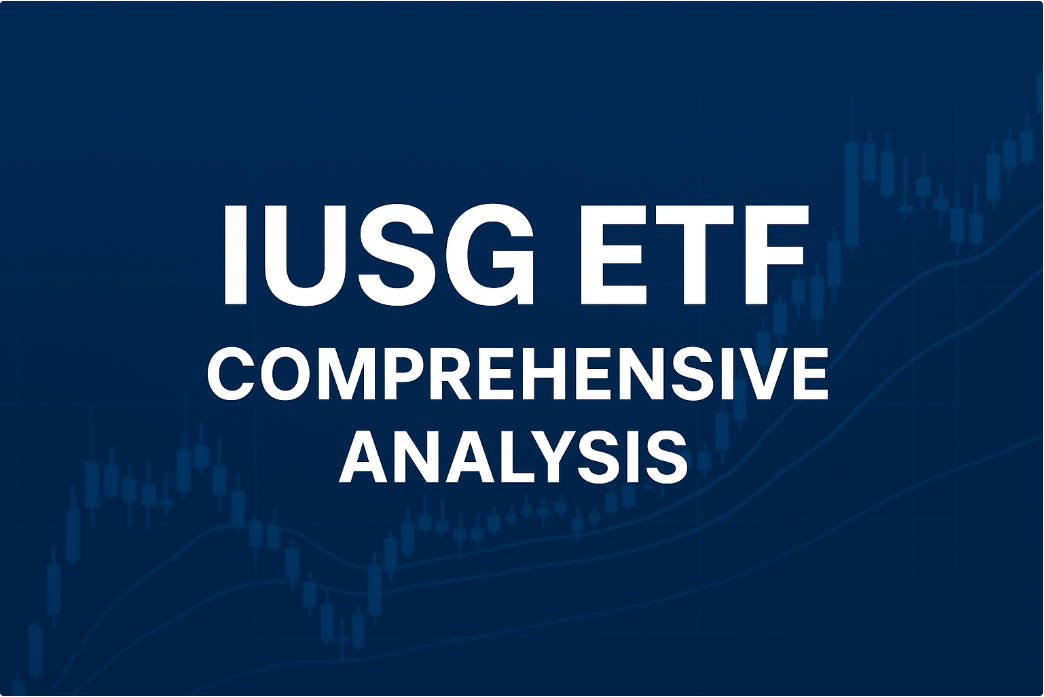
IUSG stands for iShares Core S&P U.S. Growth ETF and is managed by BlackRock. The fund seeks to track the S&P 900 Growth Index, which targets large and mid capitalisation US equities that display above average growth characteristics.
The ETF offers a rules based, passive route to capture the growth style of the US equity market with the objective of low tracking error and low recurring costs. The published expense ratio is 0.04 percent.
Key specifications and up-to-date statistics

Expense ratio:
0.04 percent as stated in the official prospectus and fund fact sheet.
Number of holdings:
Roughly 460 to 470 securities depending on the latest portfolio reconstitution.
Concentration:
the top 10 holdings typically represent just over half of the fund’s assets. Recent data show the top ten account for about 52 percent of assets.
Recent performance snapshot:
year to date NAV total return in 2025 has been strongly positive, with mid-October 2025 YTD figures around the high teens percent. Check the issuer page for the precise live figure on the day you trade.
Representative top 10 holdings of IUSG ETF
| Company |
Approximate weight |
| NVIDIA Corporation |
13.40% |
| Microsoft Corporation |
6.10% |
| Apple Inc. |
5.30% |
| Broadcom Inc. |
4.90% |
| Meta Platforms Inc. |
4.80% |
| Alphabet Inc. (Class A) |
4.40% |
| Amazon.com Inc. |
3.80% |
| Tesla Inc. |
3.80% |
| Alphabet Inc. (Class C) |
3.60% |
| Eli Lilly and Company |
1.90% |
Sector composition of IUSG ETF
| Sector |
Approximate share of assets |
| Information Technology |
38 to 40% |
| Communication Services |
10 to 12% |
| Consumer Discretionary |
10 to 12% |
| Health Care |
8 to 10% |
| Industrials and others |
Remainder |
(Sector percentages vary with market moves and reconstitutions; the fund is therefore heavily biased to technology and related growth sectors.)
IUSG ETF's Performance and risk characteristics

1. Historical total returns:
IUSG has delivered strong returns in periods where growth has outperformed, and its multi-year returns have tended to sit in line with other core large growth ETFs.
For trailing periods you should compare 1. 3 and 5 year numbers on the issuer site or a reliable data provider. Recent 1 year and 3 year returns have been significantly positive as the largest growth names drove market gains in 2024 and 2025.
2. Volatility and drawdown profile:
The fund exhibits higher volatility than broad market ETFs due to its growth-style focus and heavier weighting in megacap technology and semiconductors, which can lead to larger drawdowns during market sell-offs.
3. Correlation and beta:
As a growth ETF, IUSG's beta versus the S&P 500 will be above one in environments where growth leads. In value-led rotations the beta relationship can invert in practical terms because growth underperforms.
4. Cost adjusted returns:
Low management fees mean that, over long horizons, fee drag is minimal versus rivals with higher expense ratios. The 0.04 percent management fee is an important structural advantage.
Key Strengths and Risks of the IUSG ETF
| Strengths |
Risks |
| Low-cost (0.04% expense ratio) |
Concentration in top 10 holdings (~50% of fund) |
| Diversified growth exposure (hundreds of stocks) |
High valuation sensitivity to interest rates or cash flow changes |
| Tracks a transparent, rules-based benchmark (S&P 900 Growth Index) |
Growth style may underperform value for extended periods |
| High liquidity and broad accessibility |
Currency fluctuations and varying tax treatments for international investors |
| CFD access for tactical or leveraged exposure |
Leverage, margin, and financing risks; suitable only for experienced investors |
Investors can access ETFs such as the IUSG ETF not only through traditional brokers but also via platforms like EBC, which provides ETF CFD (Contract for Difference) trading, offering exposure with tactical flexibility and the potential for high profits, though at higher leverage-related risk.
Comparison of IUSG ETF and Major Peers
| ETF (ticker) |
Expense Ratio |
Number of Holdings |
Top 10 Holdings Weight |
Benchmark Index |
Distinctive Feature |
| IUSG (iShares Core S&P U.S. Growth) |
0.04% |
~462 holdings |
~52% |
S&P 900 Growth |
Broad, low-cost U.S. growth exposure |
| VUG (Vanguard Growth ETF) |
0.04% |
~180 holdings |
(Typically lower than IUSG) |
CRSP US Large Cap Growth |
More concentrated growth fund |
| SCHG (Schwab U.S. Large-Cap Growth) |
0.04% |
~227 holdings |
— |
Dow Jones U.S. Large-Cap Growth |
Another cost-efficient core growth alternative |
IUSG offers broader diversification than VUG and SCHG while maintaining identical cost competitiveness. This makes it appealing for investors seeking a "core" rather than a concentrated growth ETF.
Portfolio Implementation and Strategy Integration
1. Investor suitability:
2. Strategic allocation:
Conservative portfolios: 5–10% allocation as a growth satellite.
Balanced portfolios: 10–15% allocation as a growth engine.
Aggressive portfolios: up to 20% allocation for higher equity beta.
Rebalancing: Annual or semi-annual review recommended to manage overexposure to the technology sector.
3. Alternative access methods:
Beyond direct ownership, some brokers such as EBC allow investors to trade ETF Contracts for Difference (CFDs) on funds like IUSG.
This enables flexible long or short exposure without owning the underlying ETF. However, CFD trading is high risk and not suitable for all investors, given the potential for leveraged losses and funding charges.
Market Outlook and Thematic Considerations
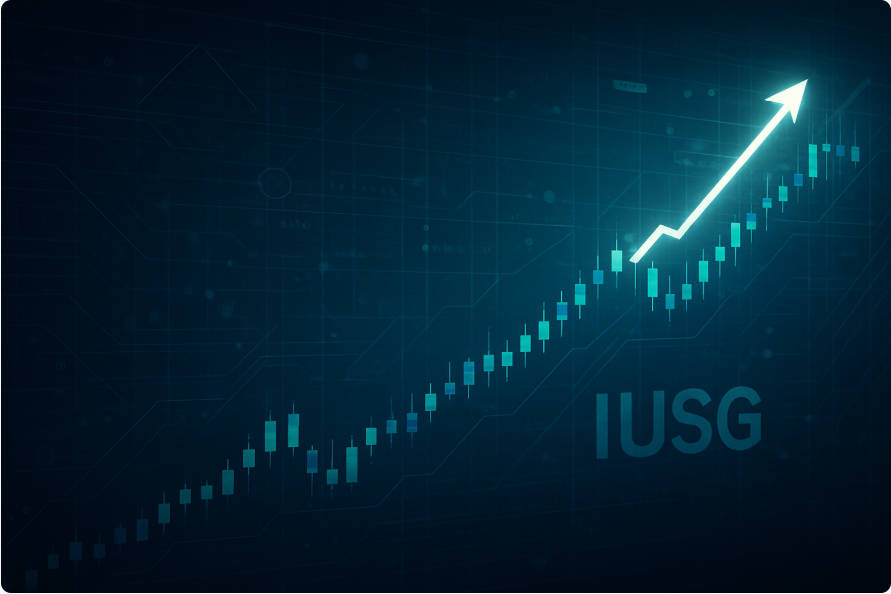
Macro backdrop:
Moderating inflation, gradual rate stabilisation, and robust corporate earnings continue to support growth equity valuations in late 2025.
Structural drivers:
Artificial intelligence, semiconductor innovation, and cloud computing remain the key earnings engines for IUSG's top holdings.
Potential headwinds:
Any reversal in liquidity or fiscal tightening could trigger valuation corrections across growth segments.
Forward-looking expectation:
Analysts project mid- to high-single-digit total returns for the next three years, assuming earnings growth of 8–10% among the largest constituents.
Conclusion
In summary, the IUSG ETF stands out as a benchmark instrument for US growth exposure. Its extremely low fees, robust diversification, and transparent methodology make it a credible long-term core holding for investors seeking to participate in America's growth sectors.
However, its high concentration in mega-cap technology names, coupled with valuation sensitivity, means investors should manage exposure size carefully, particularly when growth leadership begins to narrow.
For most investors, IUSG represents an efficient way to capture the innovation-driven heartbeat of the US economy within a disciplined, passive framework.
Frequently Asked Questions (FAQ) – IUSG ETF
1. What is the IUSG ETF?
A low-cost ETF tracking the S&P 900 Growth Index, providing diversified exposure to US large- and mid-cap growth stocks for long-term capital appreciation.
2. What are the top sectors in IUSG?
Mainly technology (≈40%), communication services, and consumer discretionary, with healthcare and industrials adding diversification.
3. What are the main risks of investing in IUSG?
Concentration in top holdings, high-growth valuation sensitivity, style cyclicality, and for non-US investors, currency and tax risks; CFD trading adds leverage and counterparty risk.
4. How does IUSG compare with its peers?
Versus VUG or SCHG, IUSG offers broader diversification, low fees (0.04%), more holdings (~462), and slightly higher top-10 weighting for mega-cap exposure.
5. Can I trade IUSG via CFDs?
Yes; CFDs provide leveraged exposure without owning shares but carry financing, margin, and counterparty risks—suitable for experienced investors.
Disclaimer: This material is for general information purposes only and is not intended as (and should not be considered to be) financial, investment or other advice on which reliance should be placed. No opinion given in the material constitutes a recommendation by EBC or the author that any particular investment, security, transaction or investment strategy is suitable for any specific person.
